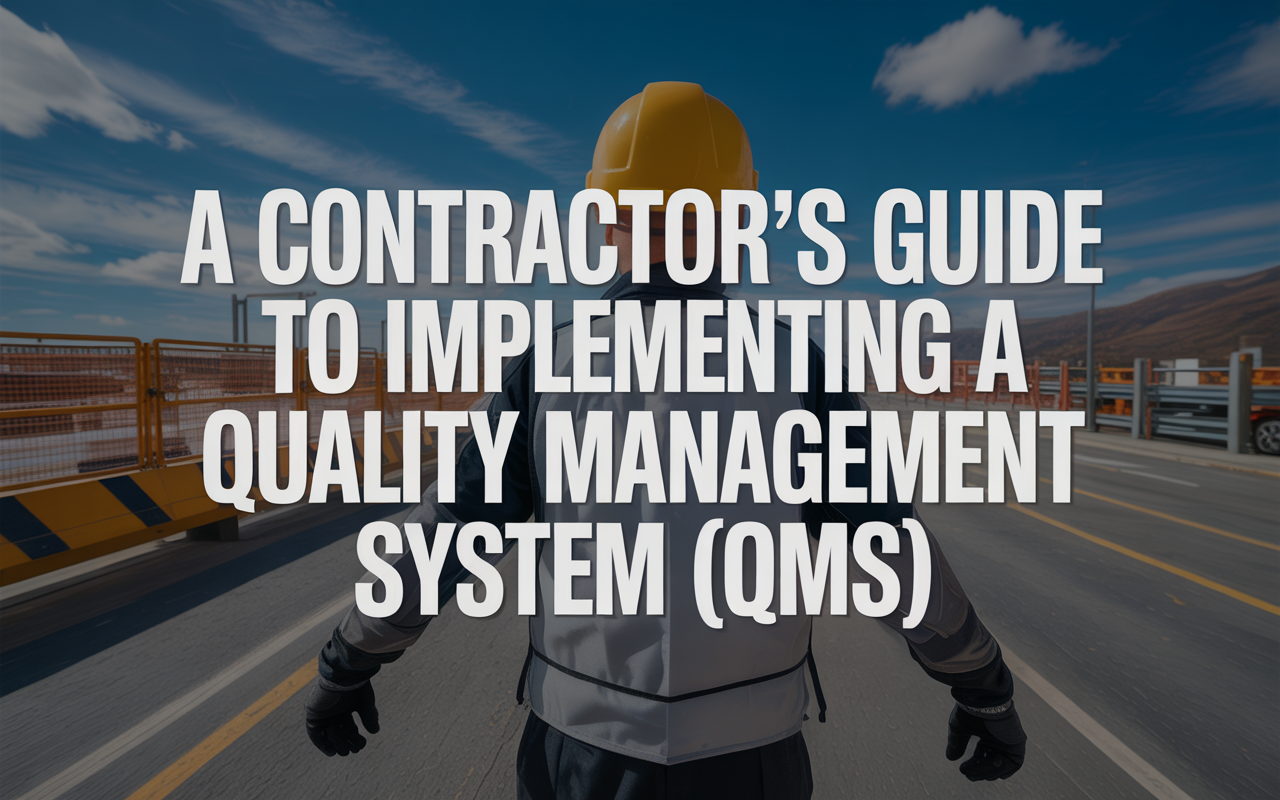Introduction
Keeping up with the ever-changing demands of environmental, health, and safety (EHS) rules isn’t just about checking off boxes on a list. Let’s be real, one slip-up can lead to hefty fines, bring operations to a screeching halt, or, even worse, put lives at risk. 😱 Trying to manage all this with manual tracking and spreadsheets that don’t talk to each other? That system is bound to crack under pressure. Environment health and safety software has moved from being a “maybe someday” item to an absolutely essential tool for any organization that’s serious about protecting its people, its assets, and its good name.
Here’s the plain truth: digital EHS platforms completely change the game for how companies monitor incidents, simplify compliance, and build a strong culture of accountability. After reading this, you’ll have a clear picture of what EHS software actually does, see how leading organizations use it to slash risks and costs, understand the features that truly count, and discover why platforms like Nektar.io are raising the bar.
What is Environment Health and Safety Software?
So, what exactly is environment health and safety (EHS) software? Think of it as a smart digital assistant designed to help organizations manage all aspects of their EHS programs. It’s a central hub for handling compliance requirements, identifying and mitigating risks, and running workplace safety initiatives smoothly. Core components often include modules for tracking incidents (from near-misses to actual accidents), managing regulatory compliance across various jurisdictions, conducting and documenting audits and inspections, and overseeing employee training records and certifications. It’s a robust system that helps keep everything organized and accessible.
Who’s typically using this kind of software? You’ll find it in the hands of dedicated safety professionals who live and breathe workplace wellbeing, compliance officers tasked with navigating the complex web of regulations, and even executive leadership who need a clear overview of the organization’s EHS performance. It’s built to empower these key players with the information and tools they need to make effective choices and ensure a safer, more compliant working environment for everyone. 👍
“EHS software is a technology solution that organizations use to manage and streamline their environmental health and safety programs.” – Prometheus
Key Features to Look for in EHS Software
When you’re looking for an EHS software solution, there are some “must-have” features that can make a huge difference. A top priority is centralized data management – having all your EHS information in one place, rather than scattered across various files and departments. Real-time incident reporting is another big one; the ability to report issues as they happen means quicker responses. Also, look for robust compliance tracking to keep on top of all those regulations, tools for risk assessment to proactively identify potential hazards, and systems for managing training records to ensure everyone is properly qualified.
Don’t forget audit management features to simplify the inspection process, and powerful analytics with integrated dashboards. These dashboards give you a visual snapshot of your EHS performance, helping you spot trends, measure progress against goals, and share insights easily. The goal is to find a system that not only collects data but helps you use it effectively to improve safety and compliance. 📊
“EHS Solution software centralizes all critical safety data, ensuring users have access to real-time, structured information.” – AMCS Group
Core Benefits of Implementing EHS Software
Putting EHS software into place brings a host of fantastic advantages to an organization. One of the most immediate pluses is much better regulatory compliance. These systems are designed to help you stay on top of legal requirements, track changes, and maintain the necessary documentation, which significantly cuts down the chance of non-compliance issues. Another key benefit is the streamlining of EHS processes. Tedious manual tasks like paper-based reporting, chasing signatures, and compiling data for reports can be automated, freeing up your team’s time for more strategic safety initiatives.
Beyond that, EHS software is a powerful tool for risk reduction. By making it easier to report hazards, conduct thorough investigations, and analyze incident data, companies can identify root causes and implement effective preventive measures. You’ll gain much better visibility into your safety performance through comprehensive analytics and dashboards. This clarity supports better choices and allows for continuous improvement. Ultimately, these systems empower a stronger workplace safety culture, encouraging everyone to take an active role in maintaining a safe and healthy environment. 👷♀️👷♂️
“One of the primary benefits of health and safety compliance software is its ability to streamline compliance processes. The technology assists organizations in complying with regulatory requirements, ensuring they meet the standards of relevant regulations.” – Evotix
Addressing Compliance and Regulatory Challenges
Navigating the maze of environmental, health, and safety regulations can feel like a full-time job in itself! 😵 EHS software steps in to simplify this complexity in a big way. It acts as a central repository for all your compliance-related information, helping you keep track of countless policies, critical deadlines for reporting and renewals, permits for various operations, and changes in legislation. This means less time spent hunting for information and more time focusing on proactive compliance.
The system also enables thorough documentation for audits, making it much easier to demonstrate your organization’s adherence to standards. We all know that failing to meet compliance obligations can lead to serious headaches, including hefty fines, legal liabilities, and damage to your company’s reputation. Modern EHS platforms are designed to prevent these outcomes by providing alerts, automating reminders, and ensuring that all necessary steps are taken and recorded, giving you peace of mind.
“EHS management software can help companies ensure compliance with EHS regulations by providing a framework for managing and tracking compliance requirements. This can help companies avoid fines and legal liabilities resulting from non-compliance.” – BIS Safety Software
Risk Assessment and Incident Management
A cornerstone of any strong EHS program is effective risk assessment and incident management, and software can supercharge these efforts. EHS platforms often automate and simplify the process of reporting incidents, from minor near-misses to more serious events. This makes it easier for employees to report issues promptly, ensuring that crucial information isn’t lost. Once reported, the system can enable a rapid and consistent response, guiding teams through investigation protocols and ensuring follow-up actions are tracked. Over time, the collected data helps identify patterns and trends, highlighting areas where risk mitigation efforts should be focused.

These tools are also invaluable for conducting and documenting risk assessments. You can systematically identify potential hazards across your operations, evaluate their severity and likelihood, and plan appropriate control measures. Real-time hazard tracking means that new risks can be flagged and addressed quickly. By implementing robust preventive controls based on these assessments, organizations can dramatically reduce the frequency and severity of workplace incidents, protecting their workforce and their bottom line. Prevention is always better than cure! 🩹
“Features like real-time data analysis and predictive analytics enable health and safety managers to anticipate potential hazards and proactively implement preventive measures.” – Evotix
Analytical Insights and Reporting Tools
EHS software isn’t just about collecting data; it’s about turning that data into actionable intelligence. Good EHS platforms come equipped with powerful reporting and analytics tools that can generate a wide array of reports, from detailed incident analyses to high-level performance summaries for management. These insights are crucial for decision-makers who need to understand EHS performance, identify areas for improvement, and allocate resources effectively.
Organizations leverage this data in many ways. They can track key performance indicators (KPIs) like incident rates, training completion percentages, and audit scores to measure progress towards their safety goals. Visual dashboards often present this information in an easy-to-understand format, making it simple to spot trends, both positive and negative. This data-driven approach supports continuous improvement strategies, helping companies refine their safety programs and make their workplaces even safer. 📈
“EHS management software generates comprehensive reports and analytics to provide insights into EHS performance.” – IBM
Integrating EHS Software with Other Business Systems
To get the most out of your EHS software, it’s often beneficial for it to play nicely with other business systems your company already uses. Think about systems like Human Resources (HR) for employee data and training, Enterprise Resource Planning (ERP) for operational information, Learning Management Systems (LMS) for delivering safety training content, and even asset management systems for tracking equipment safety and maintenance. Integrating these systems allows for a seamless flow of data, reducing manual data entry, minimizing errors, and ensuring consistency across departments. This kind of connectivity fosters better collaboration and provides a more holistic view of organizational performance and risk. 🔗
“The software can integrate with other systems, such as environmental monitoring devices, incident reporting tools, safety management systems and enterprise resource planning systems.” – IBM
Supporting a Proactive Safety Culture
One of the most profound impacts of well-implemented EHS software is its ability to help foster a proactive safety culture. These tools aren’t just for the safety department; they can engage employees at all levels. User-friendly interfaces, especially mobile apps, make it easy for anyone to report hazards or incidents quickly and easily, from anywhere. This encourages more reporting, which gives a clearer picture of potential risks. The software also supports safety training programs by tracking completion and reminding employees about refreshers, ensuring everyone has the knowledge they need.
Furthermore, EHS systems promote accountability. When actions are assigned and tracked within the system, it’s clear who is responsible for what, and progress can be easily monitored. The transparency offered by shared dashboards and reports helps everyone see how the organization is performing on safety metrics. This visibility drives buy-in and encourages a collective commitment to continuous improvement, making safety everyone’s business, not just a departmental concern. It’s about building a mindset where safety is valued and prioritized by all. 🙌
“This level of transparency fosters a culture of accountability by ensuring all employees understand their roles in maintaining health and safety.” – Evotix
Scalability and Customization for Diverse Needs
No two organizations are exactly alike, and their EHS needs can vary widely based on size, industry, geographic spread, and specific operational risks. That’s why modern EHS software solutions are designed with scalability and customization in mind. Whether you’re a small business just starting to formalize your safety programs or a large multinational corporation with complex requirements across multiple sites, the right software can adapt. Good platforms offer modular approaches, allowing you to select and pay for only the features you need, with the option to add more as your organization grows or your requirements change. They also often provide tools to customize workflows, forms, and reporting to align perfectly with your industry-specific needs and internal processes, ensuring the software fits your organization, not the other way around. 🧩
How Nektar.io Elevates EHS Management
When it comes to taking your environment, health, and safety management to the next level, Nektar.io brings some fantastic capabilities to the table. Nektar.io approaches EHS with a focus on intuitive design and powerful functionality. Their platform is built for the modern workplace, emphasizing cloud scalability, which means it can grow with your business, no matter the size. Users love the user-friendly dashboards that provide clear, actionable insights at a glance, and robust mobile access ensures that your team can report incidents, complete checklists, and access vital safety information right from the field. 📲 Nektar.io is all about helping organizations future-proof their EHS strategy with a system that’s both comprehensive and easy to use.
Nektar.io provides strong support for critical EHS functions. From ensuring compliance with up-to-date regulatory libraries and automated reminders, to delivering real-time analytics that help you spot trends and make proactive choices, the platform is designed to be a central hub for all things EHS. It simplifies training management, tracks corrective and preventive actions (CAPAs) effectively, and offers seamless integration possibilities with other key business management systems. For companies looking for a sophisticated yet approachable way to manage risk, ensure compliance, and foster a strong safety culture, Nektar.io offers a compelling path forward.
Latest Trends in Environment Health and Safety Software
The world of EHS software is constantly advancing, with new technologies and approaches emerging to make workplaces safer and more compliant. One of the most exciting trends is the increasing use of predictive analytics and artificial intelligence (AI). These technologies can analyze vast amounts of historical data to identify patterns and predict potential future incidents, allowing organizations to take preventive action before problems occur. Mobile-first design is also a big one, recognizing that many EHS tasks happen out in the field, not behind a desk.
We’re also seeing more integration with Internet of Things (IoT) devices for real-time monitoring of environmental conditions or worker safety. Imagine sensors that can detect hazardous gas leaks or wearables that monitor lone worker vital signs. Automated regulatory updates within the software are becoming standard, saving companies countless hours of research. There’s also a growing focus on sustainability metrics, helping organizations track and report on their environmental impact alongside traditional safety and health data. It’s all about smarter, more connected, and more proactive EHS management. 💡

Common Implementation Challenges (and How to Overcome Them)
Switching to a new EHS software system, or even implementing one for the first time, can come with a few bumps in the road. It’s good to be aware of these potential hurdles. Change management is often a big one – getting everyone on board and comfortable with new processes takes effort. Data migration can also be tricky, especially if you’re moving from paper-based systems or older software; ensuring all your historical data is accurately transferred is key. User adoption is another critical factor; if the software isn’t easy to use or if people aren’t properly trained, they simply won’t use it effectively. Finally, integration with other existing business systems can sometimes present technical challenges.
But don’t worry, these challenges are definitely surmountable! For change management, clear communication about the benefits, involving employees in the selection process, and providing excellent training can make a world of difference. For data migration, plan carefully, cleanse your data beforehand, and consider phased rollouts. To boost user adoption, choose intuitive software (like Nektar.io 😉), offer ongoing support, and highlight early wins. When it comes to integration, work closely with your software provider and IT team to map out requirements and test thoroughly. A well-planned approach can lead to a smooth transition and successful digital EHS management.
FAQ: Environment Health and Safety Software
- What is environment health and safety software?Environment health and safety (EHS) software is a digital toolset organizations use to manage and streamline their safety programs, ensure compliance with regulations, and mitigate workplace risks. It centralizes data for things like incident reporting, audits, training, and chemical management, helping to create safer and more efficient operations.
- How does EHS software improve workplace safety?EHS software improves workplace safety by making incident reporting faster and easier, enabling thorough investigations to find root causes, and tracking corrective actions. It also supports proactive risk management through hazard identification and assessment tools, and helps ensure proper training, all contributing to a culture where safety is a top priority and incidents are reduced.
- Can EHS software help meet regulatory requirements?Absolutely! EHS software is a huge help in meeting regulatory requirements. It can store and organize compliance documentation, track deadlines for permits and reports, provide alerts for regulatory changes, and generate audit trails. This makes it much simpler to demonstrate due diligence and avoid penalties associated with non-compliance.
- What kinds of organizations benefit most from EHS solutions?A wide range of organizations benefit enormously from EHS solutions. This includes industries with higher inherent risks like manufacturing, construction, energy, and chemicals, but truly any company committed to worker safety and environmental responsibility can gain value. It’s beneficial for businesses of all sizes, from small enterprises looking to formalize processes to large, multinational corporations needing to manage EHS across diverse locations and complex regulatory landscapes.
- How does Nektar.io compare to traditional EHS tools?Nektar.io stands out from many traditional EHS tools through its modern, user-friendly interface, cloud-native architecture for scalability and accessibility, and strong mobile capabilities. It focuses on providing actionable insights through intuitive dashboards and robust analytics, making it easier for organizations to not just collect data, but to use it strategically to improve their EHS performance. Nektar.io is designed for ease of use and quick adoption, aiming to be a partner in building a proactive safety culture.
Conclusion
Relying on manual spreadsheets and disconnected systems for something as critical as environment, health, and safety simply exposes your company to unnecessary risks. It’s time to move beyond outdated methods. Environment health and safety software, such as the comprehensive platform delivered by Nektar.io, unifies compliance management, risk assessment, and safety program oversight into a single, centralized, and intelligent system. The benefits are clear: fewer incidents, stronger readiness for audits, a more engaged and proactive safety culture, and real, measurable savings. ✅
Don’t let EHS be just a compliance burden; transform it into a driver of operational excellence and a source of competitive advantage. Consider making the switch to a modern solution. We invite you to explore Nektar.io—see for yourself how a cutting-edge, customizable EHS platform can significantly strengthen your safety programs, protect your people, and future-proof your business. It’s a smart move for a safer tomorrow.
- Digital EHS platforms centralize compliance, risk, and safety programs, cutting down on errors and making operations smoother.
- Leading systems like Nektar.io empower organizations to automate reporting, gain better real-time analytical insights, and support ongoing improvement efforts.
- Modern software capably handles regulatory complexity, supports sustainability goals, and nurtures a transparent, accountable safety culture throughout all levels of an organization.
- Adopting EHS management technology isn’t just about ticking a box—it’s a strategic step toward reducing liability and boosting overall organizational resilience. 💪



